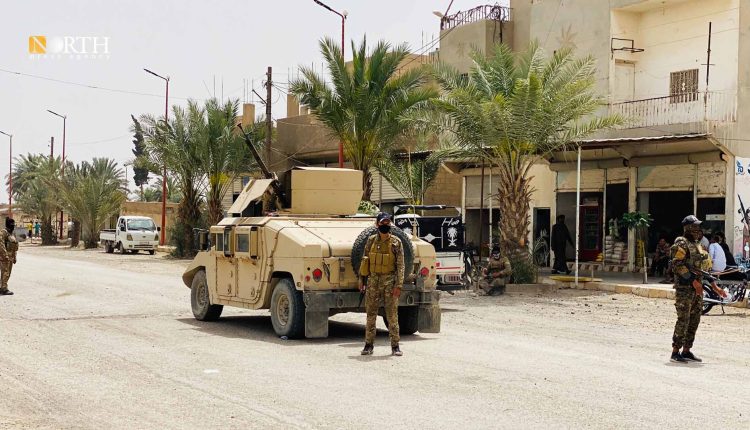ISIS Claims Deadly Attack on Kurdish Forces in Eastern Syria
By Kardo Roj
DEIR EZ-ZOR, Syria (North Press) – The Islamic State (ISIS) claimed responsibility on Monday for a deadly armed assault targeting fighters of the Syrian Democratic Forces (SDF) in the western countryside of Deir ez-Zor, eastern Syria, resulting in multiple casualties among the SDF ranks.
According to official SDF sources and online statements attributed to ISIS, the attack took place in the town of Jazrat al-Buhamid, an area that has witnessed intermittent insurgent activity despite consistent counterterrorism operations. The ambush, which targeted an SDF vehicle, led to the death of five fighters and injured three others, underlining the persistent threat posed by ISIS remnants in the region.
ISIS, through its affiliated online platforms, claimed that its operatives engaged an SDF unit west of al-Khair, stating that the assailants withdrew safely following the attack.
Persistent Security Challenges
The Deir ez-Zor countryside, particularly areas bordering the Euphrates River, remains a focal point for sleeper cells and clandestine networks loyal to ISIS. Despite the territorial defeat of ISIS in 2019 by the SDF with support from the US-led Global Coalition, the group continues to launch sporadic attacks aimed at destabilizing regions administered by the Autonomous Administration of North and East Syria (AANES).
Security experts stress that ISIS has adapted to its territorial loss by shifting toward asymmetric warfare, relying on targeted assassinations, IED attacks, and hit-and-run tactics primarily against SDF personnel, local leaders, and civilians cooperating with AANES institutions.
SDF Countermeasures and Regional Stability Efforts
In response to the ongoing threat, the SDF has intensified security campaigns in Deir ez-Zor and neighboring areas. These efforts aim to dismantle sleeper cells and neutralize extremist threats, contributing to broader initiatives for regional stabilization.
Earlier this month, the SDF, in cooperation with the Internal Security Forces (Asayish) and Coalition intelligence assets, launched a series of targeted operations that resulted in the arrest of multiple suspected ISIS operatives and the seizure of weapons and communication equipment.
The AANES administration continues to emphasize the need for sustained international support to secure territories liberated from ISIS and to prevent a resurgence. Local officials warn that without continued security and development initiatives, marginalized communities could become vulnerable to extremist influence.
Complex Dynamics in Deir ez-Zor
Deir ez-Zor province remains a particularly sensitive area, divided between territories controlled by the SDF and others held by Syrian government forces or Turkish-backed factions. This complex environment often complicates efforts to achieve comprehensive security.
Meanwhile, instability in Turkish-occupied areas and the activity of armed factions, including those aligned with the Syrian National Army (SNA) and Hayat Tahrir al-Sham (HTS), further aggravate the security situation along the peripheries of northeast Syria.
Observers note that the resilience of the SDF in maintaining security amidst such challenging conditions highlights their crucial role as a stabilizing force in a volatile landscape.
Future Outlook
Monday’s attack underscores the enduring nature of the ISIS threat and the importance of ongoing counterterrorism efforts. As the SDF continues its operations against extremist cells, attention is also shifting toward building resilient local governance structures under the AANES framework to prevent extremist re-infiltration.
Regional analysts suggest that maintaining regional security will depend not only on military operations but also on sustainable governance, economic recovery, and robust international engagement.
Without comprehensive strategies, attacks like the one in Jazrat al-Buhamid may persist, challenging the fragile stability achieved after years of conflict.

